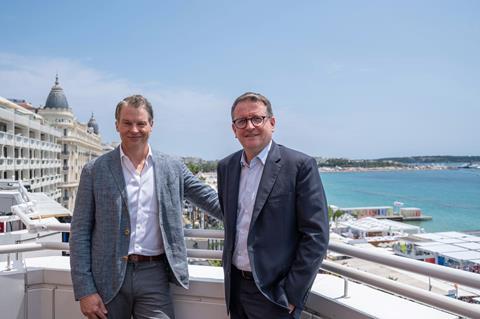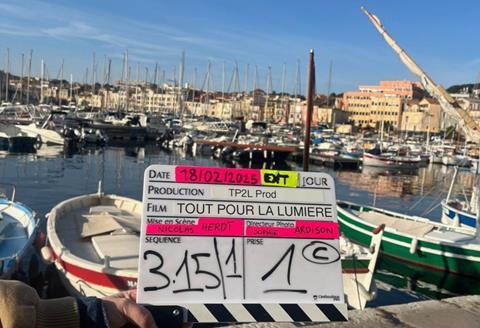Deals with Netflix and Amazon employ similar strategies for different reasons, but why and what do the deals mean for producers and distributors?
The 18 June announcement of the TF1-Netflix carriage deal, followed a couple of weeks later by the France Télévisions-Amazon Prime Video agreement, has plunged the French TV industry into a state of perplexity.
While some industry insiders are enthusiastic about the groundbreaking nature of the deals, others are questioning what these moves mean for the wider market, from the complexities of programming rights to the risk of national broadcasters losing their souls.
Reaching out
Both the TF1-Netflix deal and France Télévisions’ pact with Amazon Prime Video are reactions to audience fragmentation, but of a new kind. It is no longer just about channels as in the past, but now involves platforms and their ability to retain audiences.
When asked about the reasons behind the Netflix deal during the Rencontres Internationales des Médias event in Marseille, TF1 chief exec Rodolphe Belmer explained that it’s not only the viewing time of traditional TV channels that is being eroded in favour of streaming platforms.

Some of them, like Netflix, have become so prominent in France that they now behave “endogenously,” he said, a self-sufficient operator that is building from within.
This means that a significant portion of Netflix users in France now go to the platform first when they want to watch something in the evening, and, because of the quantity and quality on offer, they remain on the platform and venture nowhere elsewhere, he explained.
According to TF1’s international research, approximately 13 million French households receive Netflix. Of these, half use the streamer as their primary viewing platform and 40% never explore free-to-watch streaming options. Over the past decade, broadcasters’ reach has declined from 80% of the French population to around 70% currently, he said.
The purpose of the Netflix deal, which kicks in summer 2026, is to provide TF1 with additional reach. And for a commercial-driven broadcaster, reach is money. Belmer pointed out that so far, broadcasting groups have managed to post stable ad revenues because the drop in linear viewing was balanced by an increase in the cost per GRP (gross rating point).
“But this is now over,” he stressed, adding that in the past three to four quarters, all major broadcasters have started to see linear ad revenues decline, “and even more so in the UK,” he added.
Streamer TF1+, which claimed 35 million users in the first quarter, saw improved advertising revenues, but this only balanced the drop in linear ads, which, so far, has been minor. (TF1+ is also trying to diversify revenues by introducing micro-payments to watch a show ad-free).
“Yes - these deals call into question the value chain and co-production models, it is a risk versus opportunity situation”
It is worth noting that TF1 and Netflix know each other well. Rodolphe Belmer was a member of Netflix’s board of directors for several years before joining TF1, while Netflix has previously stepped in on some TF1 shows, including a couple of primetime costume dramas such as Women at War, and the unscripted show The Parisian Agency.
TF1 and Netflix also currently co-produce the daily soap Tout Pour La Lumière, which is one of TF1+’s top 10 shows but not in Netflix’s French top 10.
For Netflix, the move should help the platform appeal to a broader demographic, which will also help its own advertising efforts.
But co-chief exec Greg Peters seems to be in a wait and see mode regarding more deals: he told the Financial Times that there are no immediate plans for additional tie-ups and that it will first see how the partnership works before exploring more broadcaster partnerships.
Differing motivations
While France Télévisions’ deal with Amazon may have come just weeks after the TF1-Netflix pact, there is a different reason behind the adoption of what appears to be a similar strategy.
The logic behind the Amazon move, which will see streamer France.tv and live channels become accessible to Prime members in France, derives from the broadcaster’s current aim to explore hyper-distribution options.
“Things are a bit different for us because, as a public service broadcaster funded by public money, we have to reach all French people as effectively as possible and give our shows the best possible visibility,” Encarna Marquez, director of digital at France TV, tells Broadcast International.

She says the agreement is somewhat similar to the OTT deals that France Télévisions has with MyCanal or Molotov. Amazon will bring a complementary audience profile, she says, one that is “more male and younger”.
“According to Médiametrie statistics, France.tv’s average age is 47 (compared to well over 60 for the linear channels), while MyCanal is 40.6 and Prime Video, 38.9.”
The pubcaster has also developed France.tv, which has claimed an average of 38.6 million monthly users across the first half of the year, as an aggregator itself, distributing Arte (as does TF1+) and other public outlets such as parliamentary channels and TV5 Monde.
It has also experimented, trying out a digital sports channel for the Olympics and again during last month’s Roland Garros tennis tournament. The digital sports channel will return for the next Winter Olympics and then become permanent.
“In June, France.tv reached a record 42.9 million users on average,” says Marquez. “Big events generate peaks in viewing, and more people are now streaming live sports. France.tv is not just a replay platform anymore, but also a live streaming one.”
Other plans include expanding young adult digital offering, Slash, to social media. France TV president Delphine Ernotte also revealed that a YouTube partnership is in the works, without disclosing more detail, and the Amazon experiment will contribute to paving the way for the evolving strategy.
“Everything is going really fast in the digital space, so in one, two, or three months, we’ll be able to take stock,” says Marquez.
Unlike the Netflix-TF1 deal, which will only be effective in a year’s time, the Amazon-France Télévisions pact has already started. Being an aggregator of third-party offers already, Amazon did not have to adapt its platform technically and is already registered as an OTT distributor with the regulatory body Arcom (a move that Netflix will have to make).
Since 3 July, linear channels have been available on Prime Video, alongside France.tv, and some of the pubcaster’s shows are highlighted as part of the Prime Video carousel.
“Our deal is a world premiere because it’s the first time Amazon has carried a third-party offer that is free to watch,” points out Marquez.
What about producers?
So far, producers and distributors in France have remained - at least publicly - silent about the deals, with the exception of Banijay France MD Alexia Laroche Joubert, who reacted in a LinkedIn post that was liked by a thousand fellow professionals.

In the post, she acknowledged that the moves would be good for Amazon and Netflix, which will gain access to some premium TV shows, news, and live sports.
“For producers?” she continued, “programming sales will be hindered,” while “securing funding for dramas with other streamers will be challenging, as they will probably reject a second rights window following an initial broadcast on TF1/Netflix,” she wrote.
In the case of France Télévisions, the pubcaster had the drama series Dark Hearts co-funded by Amazon. However, it also collaborated with other platforms: Zorro was a co-venture with Paramount+, and Drops of God involved Apple TV+.
“Yes, these deals can call into question the value chain and co-production models,” France Télévisions’ Marquez tells Broadcast International. “This is a risk versus an opportunity; we’ve grabbed the opportunity, but we are aware of this and will keep these issues in sight.
“Aggregation is a movement in tune with the times,” she says. “We will also watch the Disney+ and ITV agreement [in the UK] closely,” underlining that the ramifications on the wider industry from these tectonic shifts are only just beginning to be explored.









No comments yet